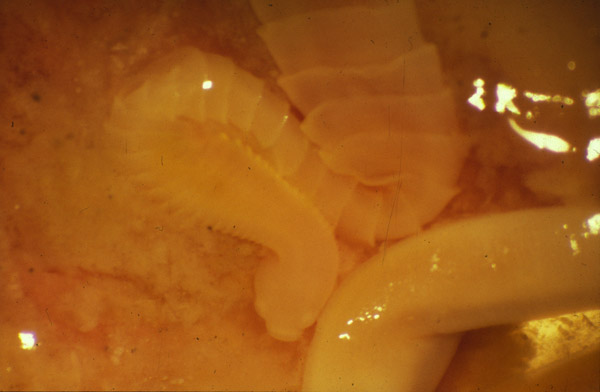Taenia solium
Why is T.solium more dangerous than T.
saginata?
- To identify parasite shape.
- To describe the path of the parasite in human
body.
- To identify the diagnostic and infective stages.
- To explain why this specific pathology occurs.
Cosmopolitan
especially in pork raising countries.
Adults live in the small intestine of man who is the only definitive host attaching itself to the mucosa.

- Gravid segment, containing eggs, usually detach
in groups (about 5-6), pass out mixed with faeces during defaecation.
- Eggs or gravid segments are ingested by the intermediate host (pig) while grazing in an area contaminated with human
faeces.
-
In the pig intestine, onchosphere hatches,
penetrating the mucosa, carried by the blood to reach the systemic circulation
via lung and right side of the heart.
-
They are distributed everywhere especially the
heart and active striated muscles where they develop into cysticercus
cellulosae which remain viable for one year then calcified.
Eggs and
gravid segments passing with stool
are diagnostic stages.
Cysticercus cellulosae is the infective stage.
Click here to see the life cycle.
By
ingestion of undercooked pork containing viable cysticerci.
In
the human small intestine, the scolex is evaginated and gets attached to the
mucosa and develops to maturity in about 3 months.
State true or false
Gravid segments of T. solium can creep
out of anus by their own activity without defaecation.
True False
Let us discover what this parasite will do in
your body.